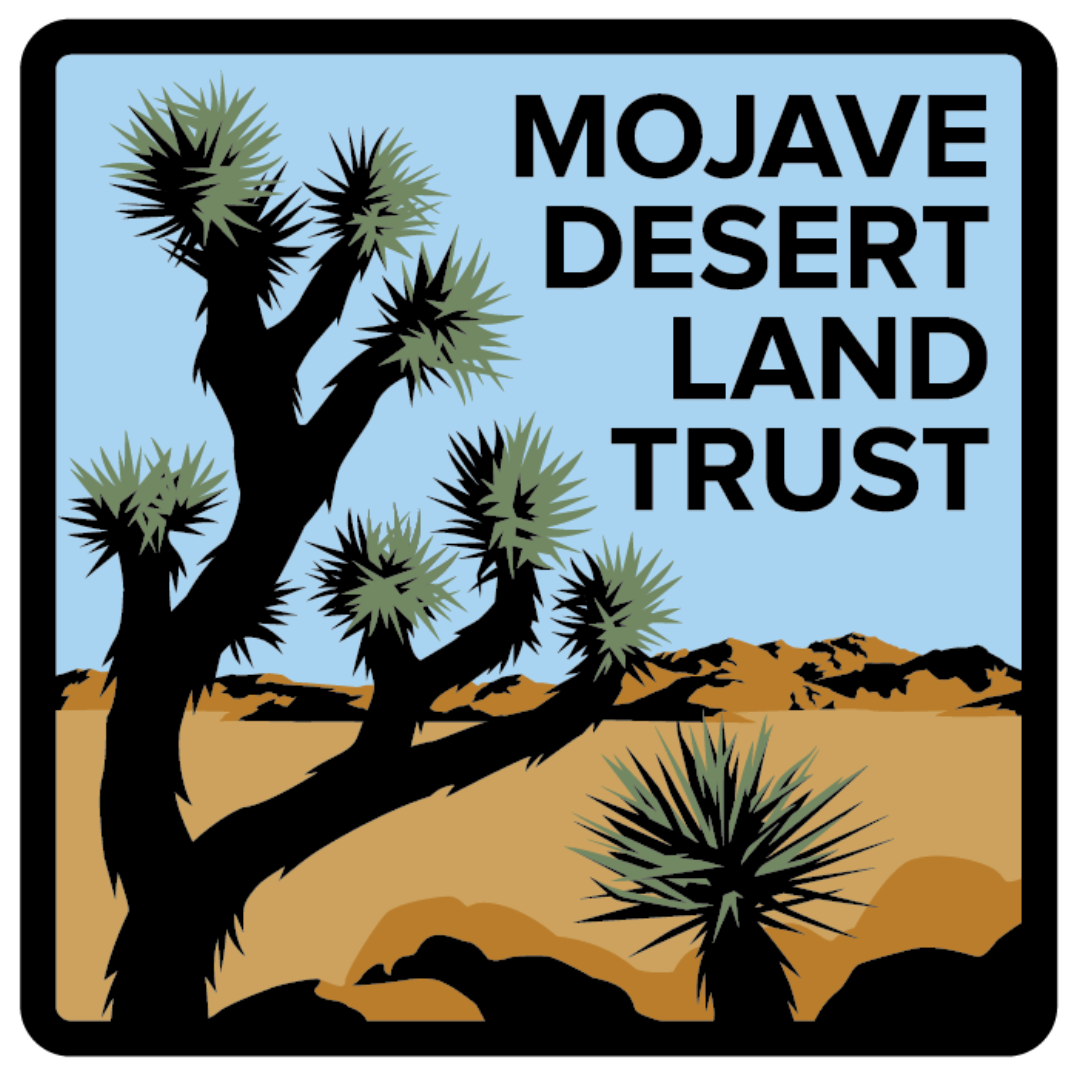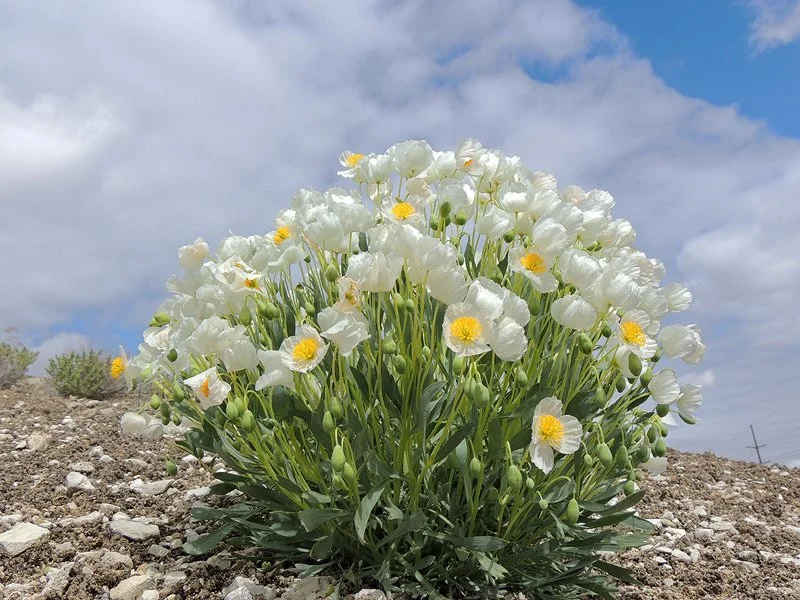Notes from the field: Calciphiles in the Mojave Desert
By Kyra Santa Cruz, Seed Bank Technician
From left: Seed Bank Technicians Anthony Rondon and Kyra Santa Cruz and Seed Bank Field Coordinator Svetlana Iachkova pause for a photo while collecting seed in Hidden Valley.
Have you ever stumbled upon a population of unique plants that seem to be heavily concentrated in one spot on a specific type of rock? Those plants are likely adapted to tolerate specific challenges presented by the soil, whether it be extremes in pH, presence of toxic metals, or nutrient deficiencies. Because these plants can tolerate such conditions, they can grow with little to no competition for resources and so, only exist on or tend to prefer these substrates.
In the Chihuahuan and Eastern Mojave Deserts there are gypsophiles, or gypsum endemics, which live on substrates high in gypsum (calcium sulfate dihydrate). One example worth noting is Arctomecon humilis, the dwarf bearpoppy.
Dwarf bearpoppy (Arctomecon humilis). Photo: Christopher Christie
Another common harsh desert substrate is calcareous or carbonate rock of which there are two main types: limestone and dolostone. Limestone consists mainly of calcium carbonate (CaCO3), whereas dolostone is primarily composed of the mineral dolomite, a calcium carbonate rock with magnesium [CaMg(CO3)2]. Most of the carbonate rock found in the Mojave Desert is dolomite. These carbonate rocks are basically the remnants of ancient seas, where both inorganic and organic materials have settled and cemented into layers over time. Because this rock contains the calcareous fossils of algae and invertebrates, the resulting substrate is high in calcium and often low in iron and zinc, which are crucial in photosynthetic processes.
Plants that prefer, or at least tolerate, calcareous soils are known as calciphiles or calcicoles. One notable calciphile is the iconic Great Basin bristlecone pine (Pinus longaeva), found withstanding extreme conditions at high elevations in mountain ranges across the American west. Plant adaptations to high calcium are complex and involve processes such as storage of calcium in cell cavities, precipitating calcium through the roots, or even mycorrhizal fungal associations.
Our seed bank field team has been heading higher in elevation to desert mountain ranges in the Mojave where we’ve seen some of these limestone habitats and the neat plants that inhabit them.
The New York Mountains in Mojave National Preserve.
In the New York Mountains in Mojave National Preserve, the team surveyed a ridgeline that appeared to have a large section of limestone and found significant populations of three plants known to inhabit calcium carbonate soils: Petrophytum caespitosum, Petradoria pumila ssp. pumila (California rare plant rank 4.3), and Cercocarpus ledifolius var. intricatus. P. caespitosum. The former, living up to its genus epithet (petro = rock, phytum = plant) and common name—mat rock-spirea—was abundant, forming matting mounds of succulent-like rosettes that appear to tightly hug the calcium-rich rock faces they call home. A member of the rose family, its flowers are captivating dense sausages of what seem to be all stamens.
This limestone face also harbored many Petradoria pumila plants, which possess an equally apt name. Known as rock goldenrod, it contains the same Greek root for rock, “petra,” in its name. A dense little bushel of rayless aster flowers rising above a white mat of the leaves of seasons past, it’s in good company alongside the rock-spirea.
Photos: Kyra Santa Cruz
Below this ridgeline, amongst the pines (Pinus monophylla x edulis) and junipers (Juniperus osteosperma), the team also discovered a few populations of two more calcium carbonate-tolerant species: Frasera albomarginata var. albomarginata (California Rare Plant Rank 2B.2) and Penstemon thompsoniae (CRPR 2B.3). These species cohabitate on a slightly different carbonate rock environment, one where the rock is broken down into gravely substrate flats. This penstemon is different than your typical grandiose penstemon; It is quite small, forming diminutive dense mats of glaucous blue leaves with tiny violet flowers to match. Also easily missed by the passerby and reliably hanging out alongside the penstemon was the Frasera, forming tiny rosettes of linear leaves with stark white leaf margins, as the name implies. The stature of both these species clearly reflects the tough conditions they are able to tolerate.
Frasera albomarginata var. albomarginata. Photo: Kyra Santa Cruz
Despite having little competition from other plants, these calciphiles face threats of other sorts. Unfortunately, another organism that likes to utilize limestone is us, humans. Limestone is an important component of cement manufacturing as well as agricultural, construction, and chemical industries. Entire hillsides are actively being carved away for such purposes. This poses a considerable risk to these unique and rare plant populations.
Even more reason to voice your support of public lands protection! Go out, look for cool plants, and continue to advocate for them and the lands we share.





